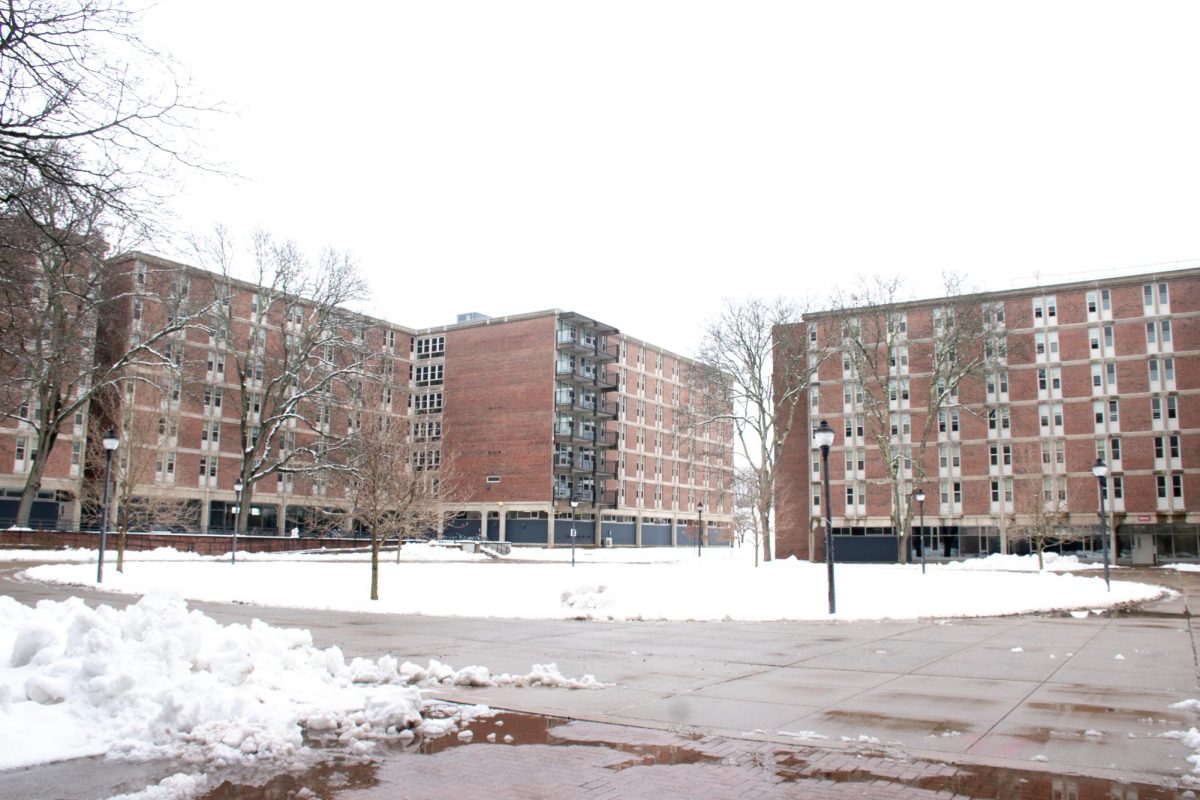It’s the tallest academic structure in the world and the largest publicly funded library in New England. The W.E.B Dubois library is not only a place for students to study, learn and collaborate on campus, but a symbol of the university and a distinctive aspect of the University of Massachusetts skyline. With 26 floors of study space, group work areas and other resources like the Learning Resource Center and the 3D Printing Center, it would seem difficult for a UMass student to have trouble finding a place to do work or be engaged in learning at the library.
On days when I don’t feel like doing work in my own dorm room, I sometimes struggle to find a place to study. I prefer a large table to spread out instead of my small desk, and my suite can often be noisy or distracting. Despite how much UMass emphasizes the library as a study spot, it is my last resort for a place to catch up on homework or cram for an exam.
Libraries are often great places to study on a college campus, as they usually hold almost all the academic resources a college has to offer. When visiting other schools before my decision to attend UMass, I was interested in seeing the library and its atmosphere since I assumed I would be spending most of my time studying there. But my experience after coming to UMass has been quite the opposite.
While some students may enjoy the library, I find the entire structure to be rather dated and unwelcoming. While extremely functional, with a multitude of student services, such as printing and Information Technology, I will only visit the library if it is absolutely necessary. Especially in the upper floors, the library’s environment is stifling and uncomfortable. Due to the rows and rows of books, lighting is limited to fluorescent bulbs away from the windows and less natural light throughout the room.
I would much rather study in the Campus Center, South College, the Integrated Science Building or one of the many other public buildings on campus that are open late. These other study spots also offer more of a flow of people, which I prefer to a deathly quiet study room. The library also does not offer many study spots for people who want to study alone that are also accessible to white boards or chalkboard space to do out work. Most of the group areas accommodate aspects like these, as they are useful in collaboration. However, when I study alone, I still enjoy having access to these collaborative tools.
UMass uses the library as a symbol for the University. It frequents the front of every brochure and welcome packet, and it is constantly emphasized to students as freshmen as one of the best places to study. While I cannot deny that this is true in terms of size – with so many floors it would be impossible not to find a spot – UMass should recognize the limitations.
There are plenty of other study spots on campus, many of which may be closer to a student’s dorm than the library, which is centrally located with few dorms close by. Buildings like the Integrative Learning Center or the ISB are great for studying between classes, as well as lesser known buildings such as the John W. Olver Design Building or the new Isenberg Business Hub.
Studying in the library probably works for some students. However, students who find themselves looking for somewhere else to do their work should know that there are many other places on campus that could offer a more accessible location, a more productive environment and a better atmosphere for them. As a freshman, I found that I had to seek out other places to study. Most promotional information led me to the library as the center of productivity and academic work on campus. After a year of my own experiences, as well as advice from RAs and other students, I’ve managed to find some of my favorite study spots on campus, all of which are closer and a better environment for me than the library.
While I am not disparaging the promotion of the library – I recognize its immense resources and multitude of study space options – the University, being such a large and spread out campus, should not only be putting focus on one center of learning. Providing information about other study spots on campus to freshmen would be helpful and allow students to find places to work that are accessible and convenient for them without them having to search for these on their own.
Alanna Joachim is a Collegian columnist and can be reached at [email protected].



















